Real estate photography, as well as architectural and interior photography, requires a camera that can bring the best features of a room to life.The best camera for real estate photography should help you create high-quality and professional photos that will have agents lining up to schedule your next shoot. Here’s our list of the top 10 best cameras to use for real estate photography.
Ultra-high resolution sensor combined with a robust body and tilting touch screen make this a top choice for real estate photography.Besides, depending on each price segment, users will need to consider and make the best choice.
Whatever the case, investing in one of the cameras highly reviewed will set you up for success when photographing buildings and interiors.
We reviewed the best cameras for real estate photography to boost your earnings.
Why should you buy yourself a professional camera for real estate photography?
Clients are paying to get the most professional photos to help sell their listings better. Your job is to provide stunning photos that capture the attention of potential buyers. The more effective your photos are, the more likely agents will come back when they have other listings to put on the market. One can do well with a starter camera, but to take your business to the next level, you will need to make an investment.
A professional camera brings the following benefits:
- wide range of lens
- customizable specs
- superior lighting accommodation
Here we will go in-depth about each benefit that a professional camera brings.
Wide range of lenses
Although there have been improvements in smartphone photography in recent years, some laws of physics and photons can only be overcome by changing lenses, just like with traditional cameras. Most mobile phones have lenses with a focal length equivalent to 28mm on full-frame DSLRs, or some dual cameras offer a 50mm equivalent focal length of view and they often reproduce images. Professional portrait effects. Or even, you can buy some adapters to get more creative with your photography, but they rarely allow you to attach specialized lenses for interchangeable-lens cameras.
Specifically, DSLRs can use hundreds of different lenses, and each of them is designed to suit unique photography needs and conditions. No matter what you need to capture from a DSLR, there’s a lens to help you do it. From wide-angle primes, telephoto zooms to basic kit lenses, tilt-shift lenses and specialized macro lenses.
Can customize countless settings
While phones can take great photos in a variety of conditions, you’re still limited with other settings. You won’t be able to adjust aperture or focus (digital zooming on a phone isn’t the same as changing focus). What you can really control is ISO and shutter speed, and the default camera apps rarely let you do that.
One of the hallmarks of DSLRs and other dedicated cameras is the manual adjuster, which allows you to set everything like aperture, shutter speed, ISO, and even focal length. if you use a zoom lens.
Sometimes, the photos taken from your smartphone are not what you are imagining to capture accurately. In this case, a dedicated camera will allow you to change the aperture, shutter speed and ISO to get a photo exactly what you want.
This is the secret to producing ecstatic moments that phones cannot.
Low light photography
DSLRs have always had an edge over cell phones when shooting in low light, due to the way camera sensors capture light. Larger sensors have greater photosensitive sensitivity. This also means that they can capture more information about incoming light when there isn’t too much.
With advancements in technology, low-light photography on smartphones will gradually improve. But there will always be physical limitations inherent in this platform that DSLR or mirrorless cameras don’t need to bother with. In large part, it stems from the larger image sensor, which captures more light data per pixel.
What are qualities to consider when choosing a camera for real estate photography?
If you are a professional, you must have understood the parameters of sensor size, light sensitivity, optical magnification, number of pixels … on the device that you need to find. However, for those who are new to the camera industry, they will need to note the following issues:
-
Weight, battery type and customization
When there is a need to choose to buy a travel camera. You should choose a thin, light weight type, often using lithium batteries for convenient transportation on long trips. This type allows for custom modes because it is manufactured with fully automatic criteria. However, it is a compact camera to save your memories, suitable for women and those who do not have time to learn photography techniques but just want to simply shoot. When using a Lithium battery, there is no backup battery, which is a drawback.
-
Video feature
If your camera has a movie recording feature, it will be great. Video is the most effective tool you can use in your marketing strategies to generate more leads and increase sales. Movie quality is determined by parameters and the number of frames per second. Usually there are two levels of 15fps and 30fps. If you want the new playback image not to be jerky, you must set it to 30fps.
-
Buy big brands to ensure durability
In terms of brands, currently Nikon, Canon, Fujifilm and Sony are highly appreciated in the DSLR cameras on the market. When choosing the brand of camera to buy, you need to pay special attention to the product’s accessories because of which camera will go with that accessory.
Most accessories for this machine will not be able to be installed on another device.
Usually, the money to buy camera accessories is always higher than the price of the camera. Therefore, you should calculate the needs that will arise in the future before deciding which brand to choose.
Top 10 best cameras to use for Real Estate Photography
-
Canon EOS Rebel SL3
The best camera for real estate overall, user-friendly : https://www.amazon.com/Canon-Rebel-18-55mm-Lens-Black/dp/B07QBD256Y
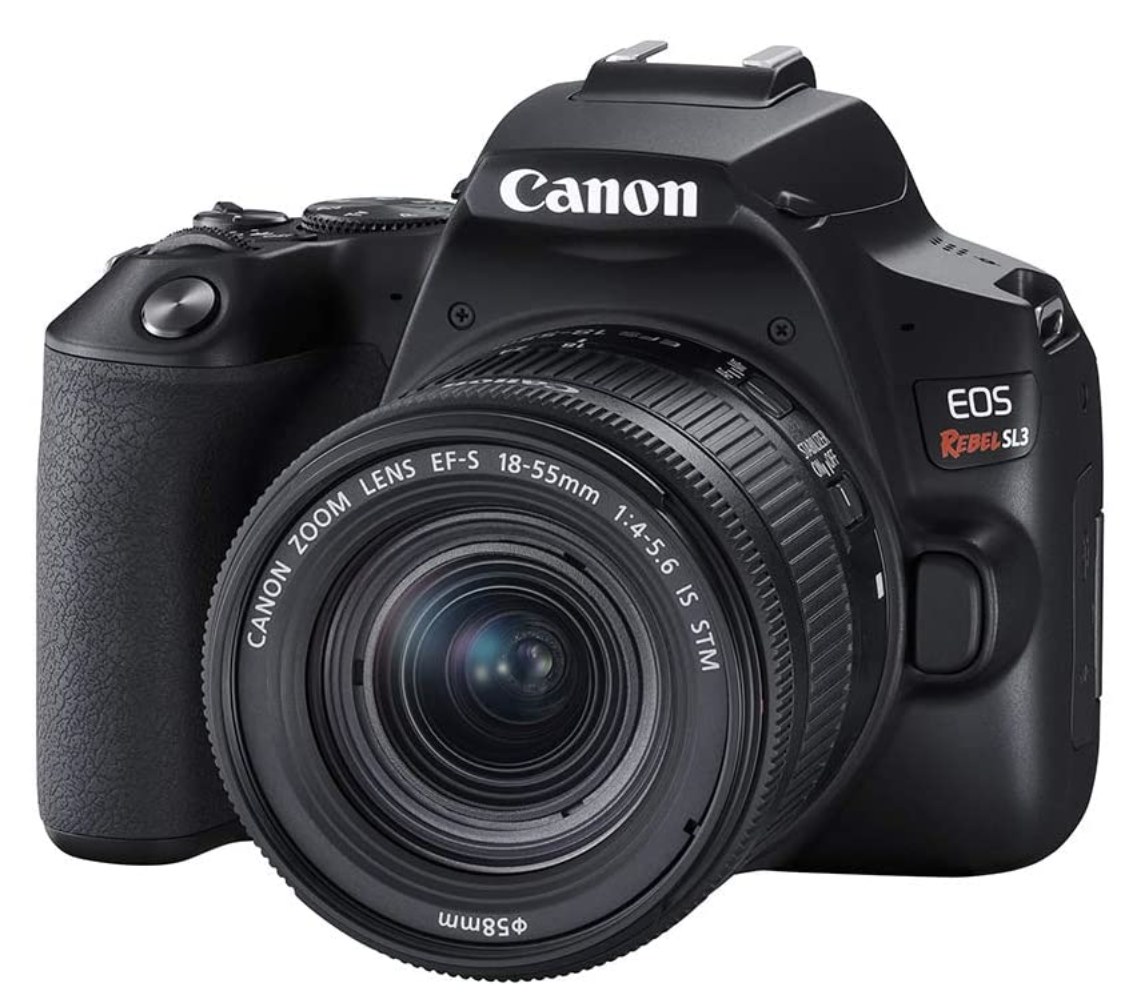
| Specification | REASONS TO BUY | REASONS TO AVOID |
| Camera type: DSLR
Sensor: APS-C Megapixels: 24.1MP Lens mount: Canon EF ISO range: 100 to 25,600 (exp. 51,200) Image stabilization: No (in lenses only) Weight: 451g (body only, with battery and SD card) |
|
|
The Canon Rebel SL3 (known as the EOS 250D in Europe) is an excellent choice of DSLR for real estate photography. It’s not the absolute cheapest in Canon’s range, but arguably offers better value than models like the EOS 2000D or 4000D. Its handy vari-angle touch screen is great for getting images from all sorts of different angles, and it’s a pleasingly light option, easy to carry around. The generous ISO range will cover you in all different lighting situations, and the APS-C sensor represents a serious step-up from a smartphone.
Link review : https://www.youtube.com/watch?v=Xj3R6WfTiLY
-
Nikon D3500
The best real estate camera for total beginners, with handy guide modes
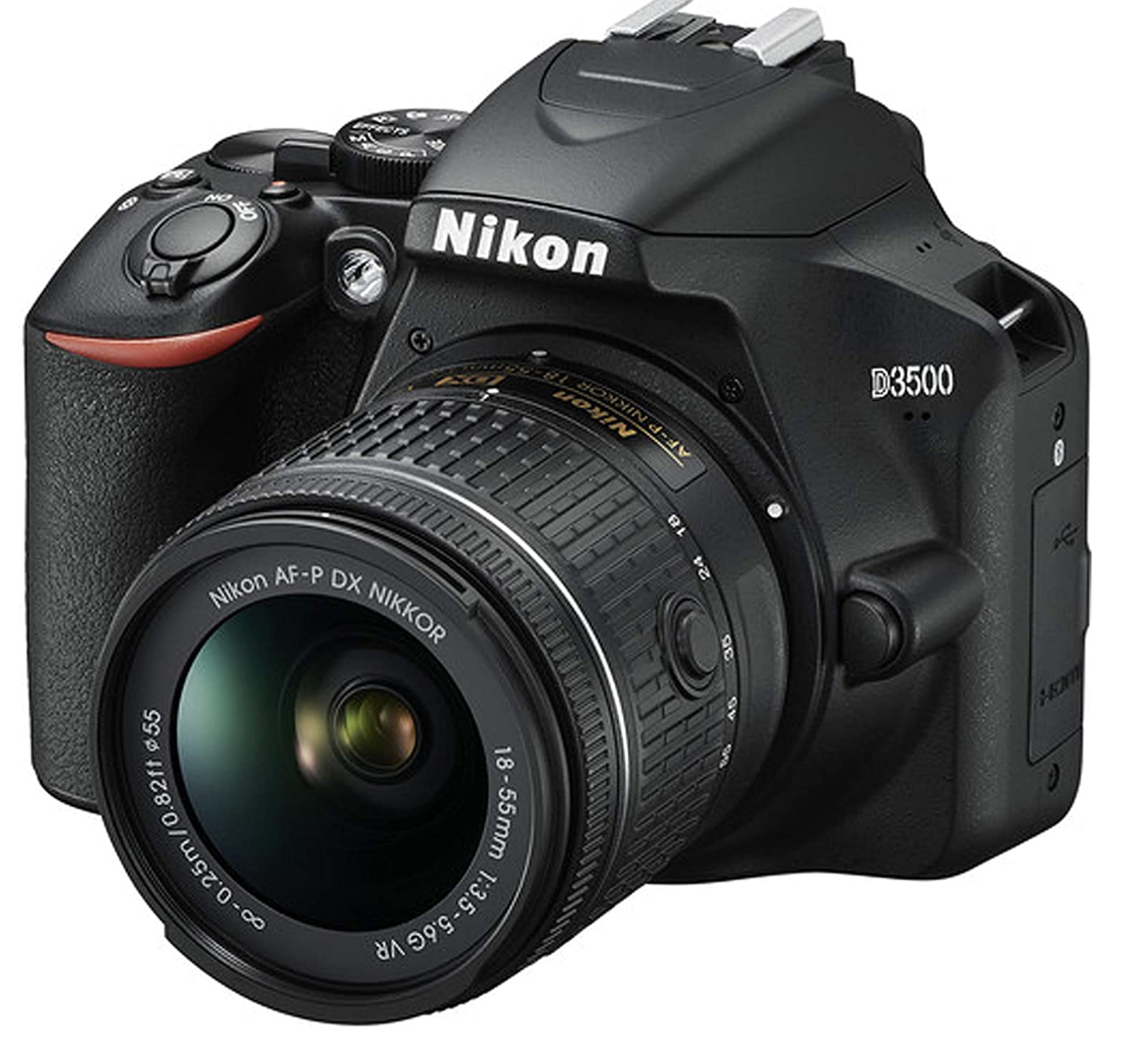
| Specification | REASONS TO BUY | REASONS TO AVOID |
| Camera type: DSLR
Sensor: APS-C Megapixels: 24.2MP Lens mount: Nikon F ISO range: 100 to 25,600 Image stabilization: No (in lenses only) Weight: 415g (body only, with battery and memory card) |
|
|
If you’re a total newbie to cameras, the Nikon D3500 might be a better choice. It’s designed specifically to help new users get to grips with its functions, lots of helpful guide modes and simplified controls. It’s extremely light and thanks to Nikon’s wide F-mount lens selection, there’s plenty of glass to choose from.
While the kit lens that comes with it will do the job in a pinch, something like the affordable Nikon 10-20mm f4.5-5.6 G AF-P DX VR Nikkor lens would be optimal for capturing real estate images.
Link review : https://www.youtube.com/watch?v=9gN-5juCU8Y
-
Nikon D850
The best professional camera for real estate photography
https://www.amazon.com/dp/B07524LHMT?tag=georiot-us-default-20&th=1&psc=1&ascsubtag=dcw-row-9027029982515665000-20&geniuslink=true
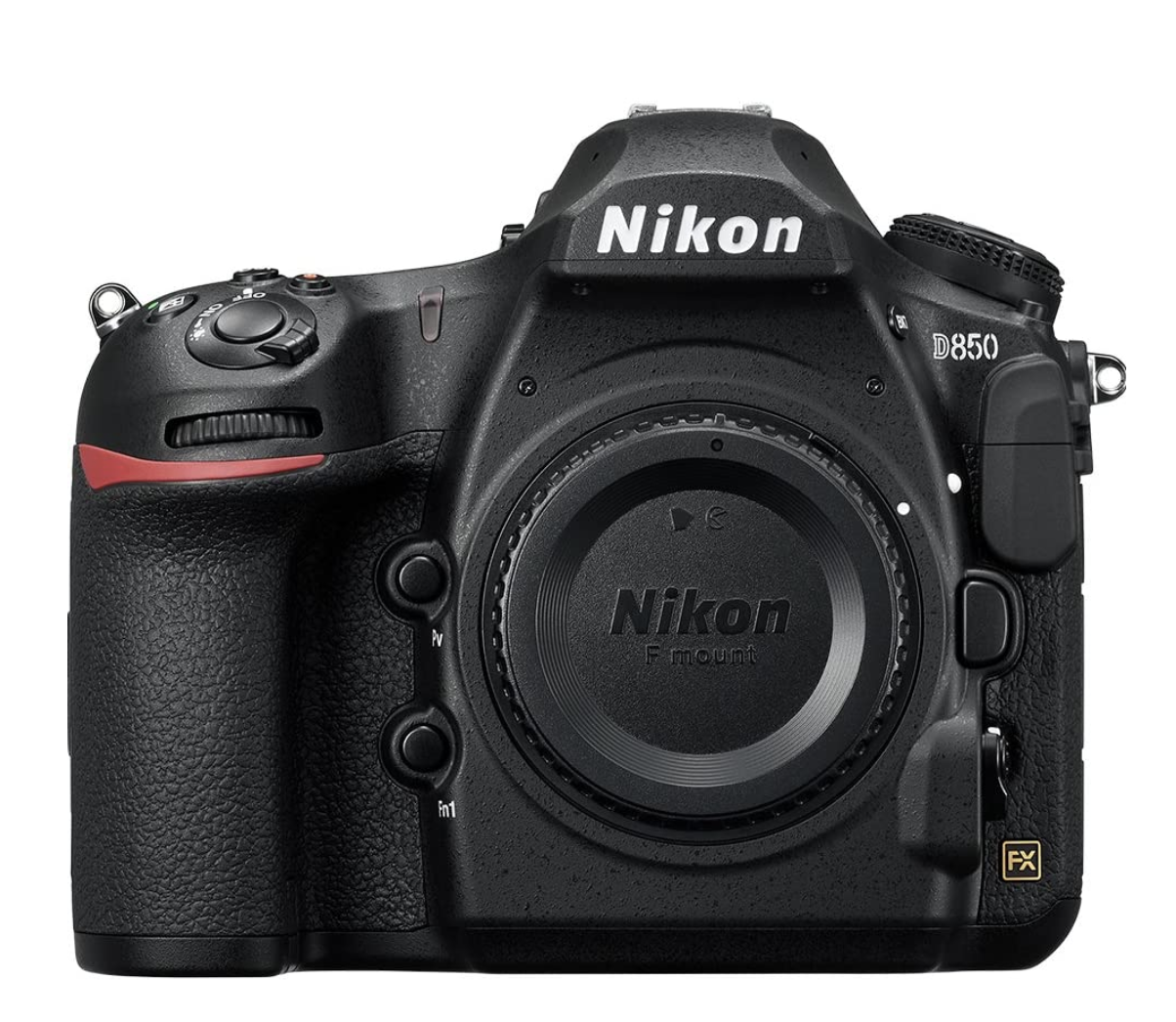
| Specification | REASONS TO BUY | REASONS TO AVOID |
| Camera type: DSLR
Sensor: Full frame Megapixels: 45.7MP Lens mount: Nikon F ISO range: 64 to 25,600 (exp. 32 to 102,400) Image stabilization: No (in lenses only) Weight: 1,005g (body only, with battery and memory card) |
|
|
If you’re looking to produce real estate photography at serious, professional quality, then a full-frame DSLR like the Nikon D850 will be just what you need. It is beloved by professionals around the world, and with its astonishing image quality thanks to its full-frame sensor, it’s not hard to see why. Low-light quality, focusing speed, megapixels. Everything here is a serious step up, and as you’d imagine, that does come with a price tag.
Link review : https://www.youtube.com/watch?v=06B0BeAo2E0
-
Panasonic Lumix GX880
The best mirrorless camera for real estate photography
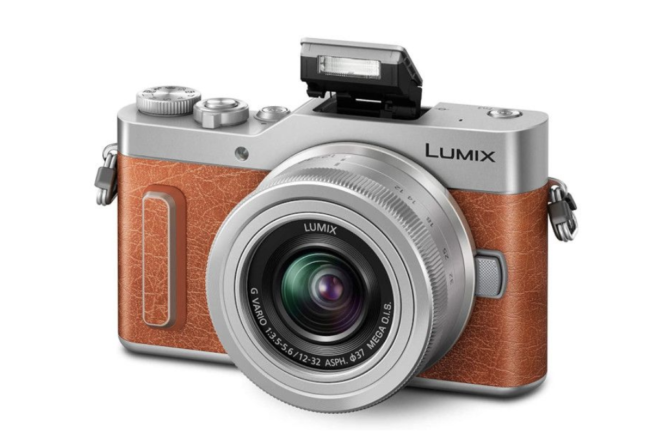
| Specification | REASONS TO BUY | REASONS TO AVOID |
| Camera type: Mirrorless
Sensor: Micro Four Thirds Megapixels: 16MP Lens mount: Micro Four Thirds ISO range: 100-25,600 Image stabilization: No (in lenses only) Weight: 270g (body-only, with battery and memory card) |
-Tiny and pocketable
-Good image quality and 4K |
-Limited wide-angle lens options
-Only 210 shots per charge
|
If you’re looking for a good mirrorless camera for real-estate photography, we’d definitely recommend taking advantage of something small and pocketable. The Panasonic Lumix GX880 is a solid choice – it’s much lighter than the DSLRs above, but with 16MP in the can, it’ll still produce images of solid quality.
Link review : https://www.youtube.com/watch?v=3wb3v45iiA0
-
DJI Pocket 2
The best budget real estate camera
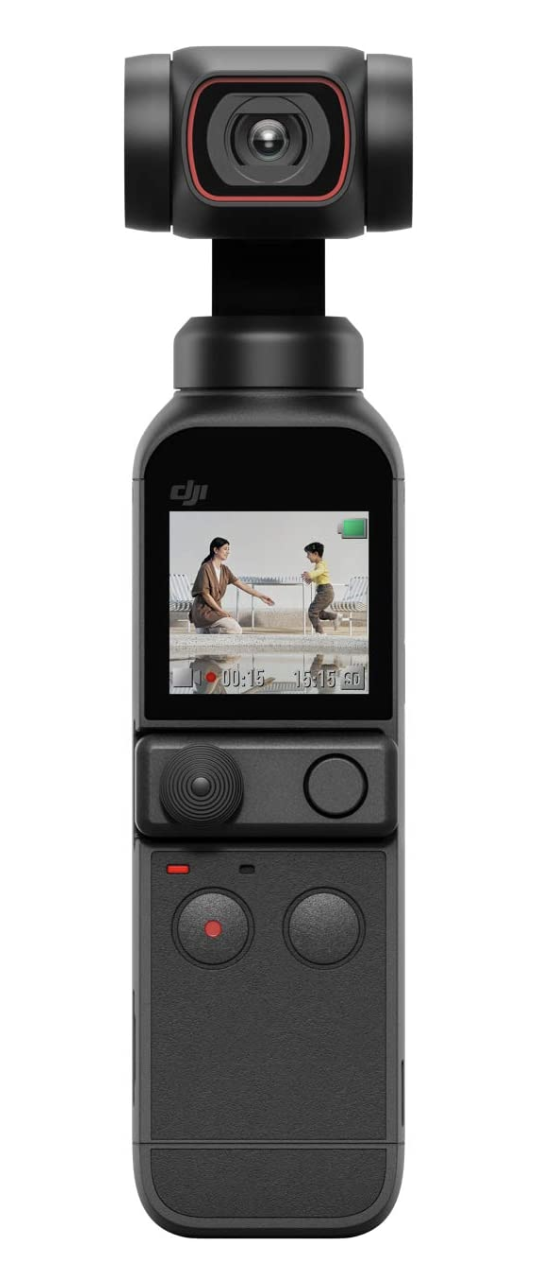
| Specification | REASONS TO BUY | REASONS TO AVOID |
| Camera type: Stabilized compact
Sensor: 1/1.7” CMOS Megapixels: 64MP effective pixels Lens: Field-of-view 93°, f/1.8 (roughly equivalent to 20mm) ISO range: 100-6400Image stabilization: 3-axis gimbal Weight: 117 |
|
|
A gimbal is a 3-axis stabilization system that compensates for camera movement to produce smooth video footage; for a walk-through of a property, this is an ideal choice. It’s small enough to take every with you, and can capture a pleasing amount of detail. Its wide field of view also means it’s a natural choice for interior room shots.
Link review : https://www.youtube.com/watch?v=_RWStBprozE
-
Insta360 ONE R Twin Edition
This modular action camera can be customized to your needs : https://www.amazon.com/dp/B083HX68LF/ref=asc_df_B083HX68LF1636660800000?tag=georiot-us-default-20&ascsubtag=dcw-row-3645192611671799000-20&geniuslink=true
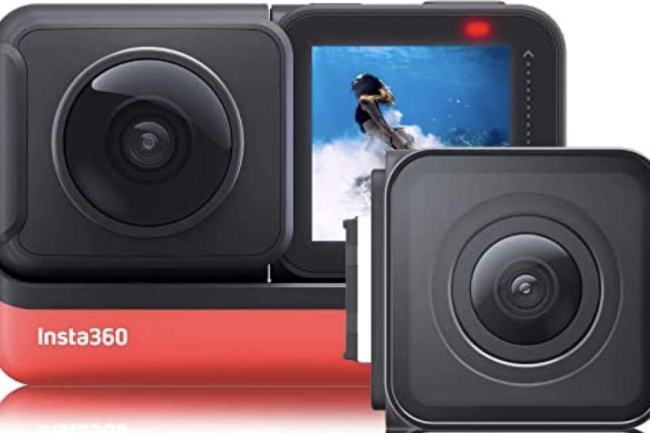
| Specification | REASONS TO BUY | REASONS TO AVOID |
| Camera type: Action camera
Sensor: Various Megapixels: 12-19 (module-dependent) Lens: Various ISO range: 100-3200 Image stabilization: Yes Weight: About 121g |
-Easy lens swapping
-Good 4K and 360° video |
-Very small display
-Can get expensive |
Action cameras are great for real-estate photography as they’re very portable and have a naturally wide-angle perspective. They can be a little limited though, so for something with real versatility, we’d recommend the Insta360 One R Twin Edition. This is actually a modular system, allowing you to switch between a conventional 4K action camera perspective, and 360° video, simply by swapping the module.
Link review : https://www.youtube.com/watch?v=GwcqYzd8ajw
-
GoPro MAX
Another great 360° camera for real estate photography and video
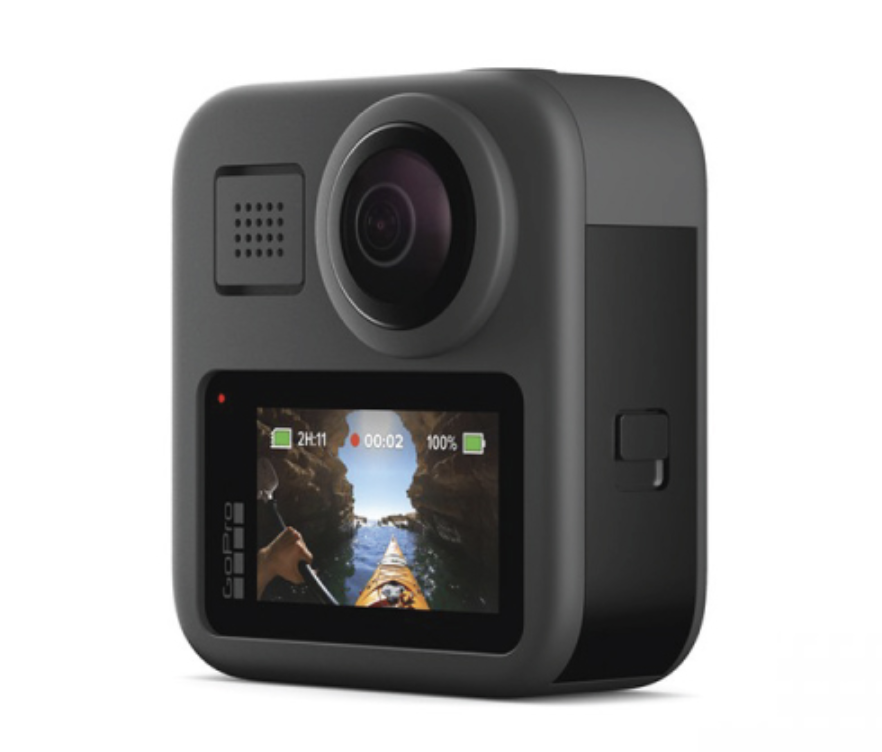
| Specification | REASONS TO BUY | REASONS TO AVOID |
| Camera type: 360 action camera
Sensor: 1/2.3″ Megapixels: 16MP Lens: 360-degree ISO range: Not specified Image stabilization: Yes Weight: 154g (including batteries) |
|
|
The Max is extremely straightforward to use, and thanks to the sophisticated app integration, it’s very easy to shoot a 360° clip, edit it on your phone and share it. For quick real-estate clips with 360° immersiveness, it’s arguably the smartest choice.
Link review : https://www.youtube.com/watch?v=zbUcgMT8VKQ
-
Matterport Pro2 3D MC250
The best camera for virtual tours
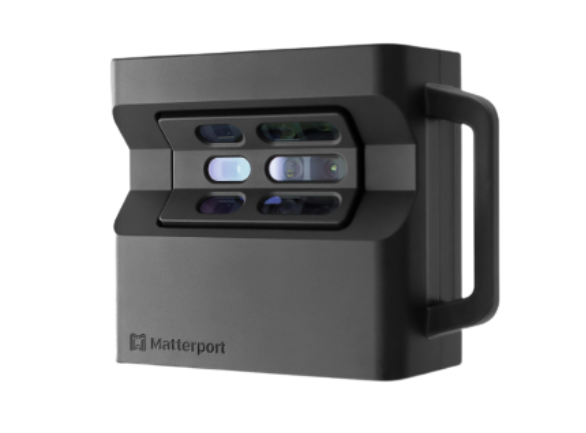
| Specification | REASONS TO BUY | REASONS TO AVOID |
| Camera type: Professional 3D camera
Sensor: Structured light (infrared) 3D sensor Megapixels: 134MP Lens: Not specified (360° horizontal x 300° vertical field of view) ISO range: Not specified Image stabilization: NoWeight: 3.4kg |
|
|
The Matterport Pro2 3D MC250 has a powerful 3D sensor and extremely large field of view, with lots of megapixels for capturing every detail. It is expensive to buy, and requires a monthly subscription to make the most of its various connected features, like schematic floor-plan generation. This is a highly technical tool and if you want something that will tick basically every box for real-estate photography, here it is.
Link review : https://www.youtube.com/watch?v=mGa-uiKRLGg
-
DJI Air 2S
The best drone for real estate photography
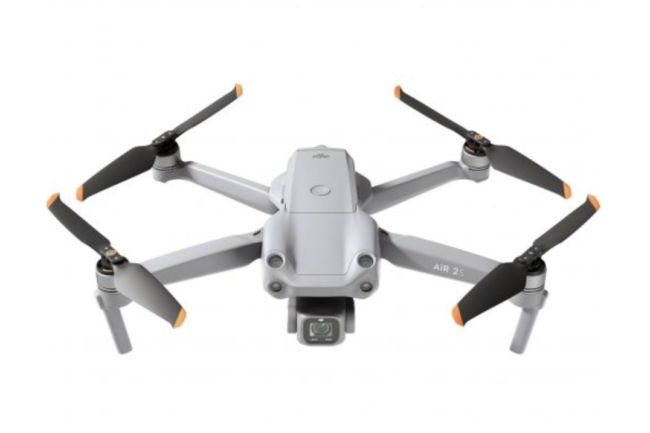
| Specification | REASONS TO BUY | REASONS TO AVOID |
| Camera type: Drone
Sensor: 1-inch Megapixels: 20MP Lens: 22mm equivalent ISO range: 100-6400 (video), 100-12800 (photo) Image stabilization: 3-axis Weight: 595g |
|
|
The DJI Air 2S is perfect for getting dynamic aerial images.
It’s small, light and controlling it is nice and easy. The much-touted digital zoom is also useful, allowing you to get images closer up than the drone can safely fly.
Link review : https://www.youtube.com/watch?v=-PhszmKX7mI
-
DJI Mini 2
This is the best cheap drone for real estate photography

| Specification | REASONS TO BUY | REASONS TO AVOID |
| Camera type: Drone
Sensor: 1/2.3-inch Megapixels: 12MP Lens: 24mm equivalent ISO range: 100-3200 Image stabilization: 3-axis Weight: 249g |
|
|
You’ll get a great deal of functionality, with full 3-axis stabilisation on its camera, 4K resolution and the ability to capture stills in the more versatile Raw format.
Link review : https://www.youtube.com/watch?v=m5zl1DXiuD0
Frequently Asked Questions
Can you buy insurance for these expensive equipment?
Any camera gear you own, such as a tripod, lens, or external flash is automatically covered under your base home insurance policy for theft, fire, vandalism, etc.
How Do I Set up Cameras for Real Estate Photography?
When setting up a camera for real estate photography, choose the necessary lens for space, whether it be wide-angle, prime, zoom, or tilt-shift. Then, modify the aperture, ISO, and shutter speed depending on the available light. Additionally, even with the best cameras for real estate photography, you’ll need to use a tripod and shutter release to minimize motion shake.
Do I Need to Use a Flash for Real Estate Photography?
Yes, you need to use a flash when taking real estate photos because you may encounter dim, shadowy, backlit, or dark interiors. It’s also essential for real estate photography to use an external flash when doing HDR so that you can shoot in various exposures.
How Can I Take Professional Real Estate Images?
Choosing the best camera for real estate photography is the first step for you to shoot professional-looking pictures. However, you also need to develop shooting techniques involving composition, lighting, and styling. Finally, you have to learn how to post-process high-quality images.
Conclusion
Choose to buy a camera for real estate photography based on the actual needs and skills of the user. With the variety of models available today, real estate photographers can easily choose to buy the best camera today at a price that is right for them. What did you think of our top 10 best camera to use for real estate photography list.
We hope this is helpful in choosing the right camera for real estate photography.
Finally, the most important thing is that real estate looks its best when captured on camera. When you take your first real estate shot or video, let us know in the comments!


